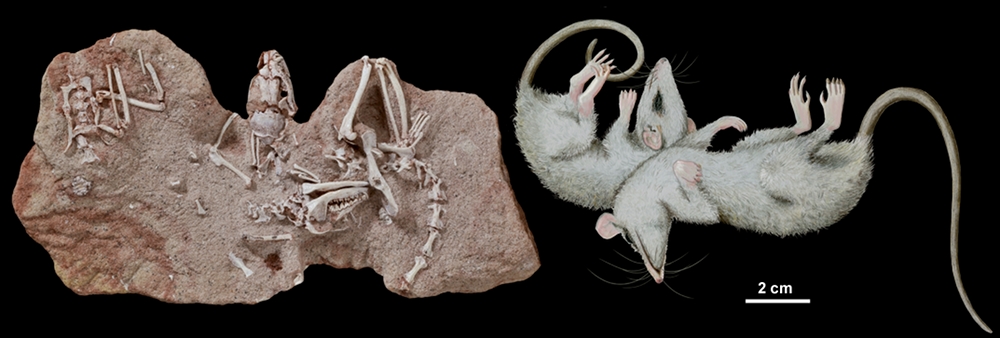Social Beasts: 35 Ancient Marsupials Found in Grave

A large trove of bones found in Bolivia is giving researchers a new look at the social lives of ancient marsupials. These ratlike animals lived in large packs, a very uncommon scenario in modern marsupials.
"We found a large number of complete skeletons from marsupial mammals. It's very exceptional," said study researcher Sandrine Ladevèze, of the Royal Belgian Institute of Natural Sciences. "We can have access to how they lived and to their ecology." [Image of marsupial skeletons]
The 35 partial skeletons are of the ancient marsupial Pucadelphys andinus, a ratlike member of the marsupial mammals, which included the extinct marsupial lion. It's the most complete collection of fossilized South American marsupials found; researchers don't even have access to this many samples of many currently living marsupials.
A social setting
The animals are quite similar to modern marsupials like the opossum. They seem to have all died at the same time, possibly during a flash flood or other natural catastrophe.
"In extant [currently living] marsupials, it's something very unusual to have so many individuals together," Ladevèze told LiveScience. "They are very territorial and live in isolated areas."

Of the bones found, the researchers were able to identify 12 of the animals as fully grown females, because they had smaller frames. Six more were full-grown males, with larger heads and bodies and pronounced canine teeth. The other five were juveniles.
Sign up for the Live Science daily newsletter now
Get the world’s most fascinating discoveries delivered straight to your inbox.
"We have a population with social interaction, both between males and females and between the old and young," Ladevèze said.
Mesmerizing marsupials
Marsupials carry their young in pouches and are found mostly in the Southern Hemisphere, like the kangaroo in Australia. They diverged from other mammals, such as the placental mammals we know -- humans, dogs and cats -- during the Cretaceous Period, which lasted from about 144 million to 65 million years ago. The oldest marsupial skeleton is 125 million years old.
Today's marsupials are solitary creatures, the main exception being the kangaroo. Sometime during their ancestry, marsupials shied away from this social nature, though gaps in the fossil record give researchers trouble when pinpointing the switch from gregarious to solitary, and its possible causes. These extinct marsupials were some of the first to enter South America, so they might have huddled together for protection.
"Living together could favor protection against predators or competitors," Ladevèze said. "Living together might have enabled them to care for their young, and allowed them to expand very quickly."
You can follow LiveScience staff writer Jennifer Welsh on Twitter @microbelover. Follow LiveScience for the latest in science news and discoveries on Twitter @livescienceand on Facebook.
Jennifer Welsh is a Connecticut-based science writer and editor and a regular contributor to Live Science. She also has several years of bench work in cancer research and anti-viral drug discovery under her belt. She has previously written for Science News, VerywellHealth, The Scientist, Discover Magazine, WIRED Science, and Business Insider.











